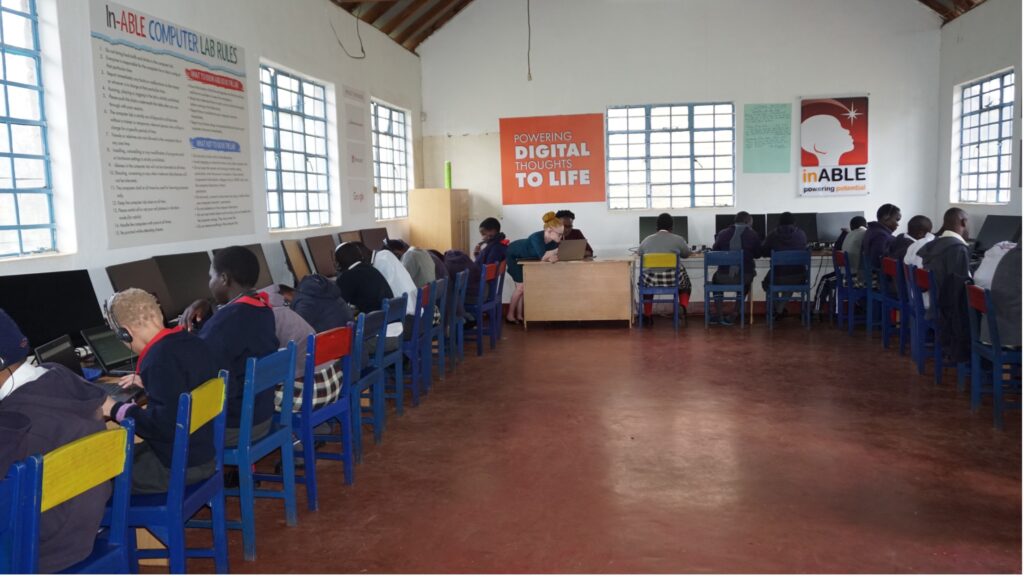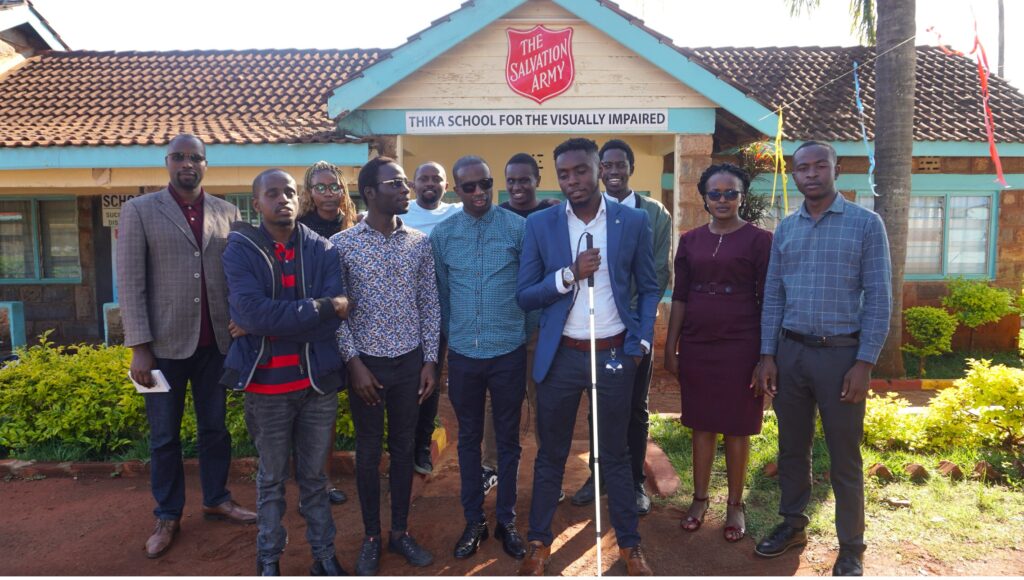Can the Blind Code? Yes, and They’re Doing It Brilliantly!
inableAdmin

Equipping young learners with future-ready skills like artificial intelligence and coding is critical, especially for those with visual impairments. This belief inspired the 14-day coding boot camp at Thika Primary School for the Blind, where students embarked on an exciting journey to learn HTML coding and software development.
Midway through the program, the learners received a special visit from students at the United States International University-Africa (USIU), including alumni of inABLE’s Computer Labs program. The visit brought encouragement, knowledge-sharing, and a celebration of the learners’ progress.
For many of the learners, this boot camp was their first experience with coding. Using Chromebooks, they were introduced to foundational coding concepts such as HTML structure, the difference between a programmer and programming, and layers of software development.
Practical lessons included using basic tools like Application Text for coding and debugging before transitioning to more advanced platforms like Visual Studio Code (VScode). VScode, an accessible cloud-based coding environment, made it easy for learners to edit, structure, and improve their coding experience. By the end of the program, learners could confidently create web pages with essential elements like forms, tables, links, and lists.

he visit by the USIU team was a source of motivation and learning. Nixon, an alumnus of inABLE’s Computer Lab program, expressed his excitement about seeing Grade 4 learners coding. “By the time they join university, they’ll be computer wizards,” he remarked.
Macharia, another USIU student and Thika Primary School for the Blind alumnus, shared how inABLE’s program equipped him with digital skills that eased his transition to university. “I commend the progress,” he said. “Being able to systematically create something on the web is a skill I learned courtesy of inABLE.”
Steven, one of the visitors, was particularly impressed by a young girl teaching him HTML. “The journey is long, but the journey of a thousand miles starts with one step,” he reflected.
Two students, Higgins and Wambui, stood out during the camp. Higgins, who had been self-teaching coding through YouTube tutorials, praised the boot camp for its step-by-step approach. “I can now create a simple web page with forms, tables, and paragraphs in 30 minutes,” he said. With aspirations of becoming a full-stack developer, Higgins wants to build solutions from scratch and see his ideas come to life.
For Wambui, this was her first experience with coding. She believes the skills she’s gaining will help her secure employment and achieve independence in the future. Eager to give back, Wambui expressed her gratitude to the program’s supporters and hopes to someday create a website for her school to showcase its accomplishments.

The boot camp wasn’t just a learning experience for the young coders—it left a lasting impression on the USIU visitors as well. “We have learned a lot and are grateful for everything,” shared Marvin, a USIU student.